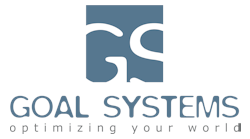Goal Systems will participate at APTA 2015 Annual Meeting to present their scheduling and planning solutions.
The American market for scheduling and planning tools reflects the importance of public transportation and its specific conditions. In such a vast country, where not having a car is unlikely, public transportation represents less than 10 percent of mobility, far below South American and European standards, except for some regions in the Northeastern Coast, where it represents 30 percent.
New York has 5,777 buses for more than 22 million people, and Los Angeles has only 2,400 public buses for 20 million people, while cities with 3.5 million people like Paris have a fleet of 4,400 buses, and other cities like Bogotá, having a similar amount of population as Los Angeles, manage fleets larger than 14,000 buses.
The technology market for public transportation in Northern America (Canada and United States) reaches $2.25 billion.
For a long time, investment in public transportation, mainly federal, has been scarce and the quantity and quality of service have depended on the efforts of local authorities. The Bus Market in the United States has a volume of 870,000 buses, 500,000 of which are used for school transportation. The 100 biggest companies have a fleet of only 63,000 buses.
The U.S. railway market is very different from the European one. Ninety percent of railway traffic is focused on rail freight transportation, the transportation of passengers being subject to the use of infrastructure for freight transportation. Amtrak, responsible for almost all the operations of passenger trains in the United States, was created in 1971. Since then, only a few local companies remain: The Rio Grande, Southern (Washington, DC-New Orleans), Southern Crescent and Rock Island, with two interstate trains in Illinois.
However, the rail freight transportation is a highly competitive sector, which transported 40 percent of all United States’ freight in 2011. American railways move 1,471,736 railcars and 31,875 engines locomotives, and have 215,985 employees, according to APTA’s annual study “Public Transportation Fact Books”, the most complete source of information about the sector.


